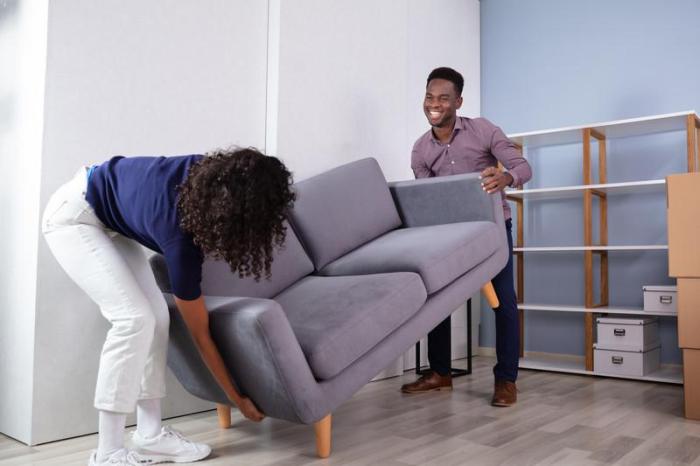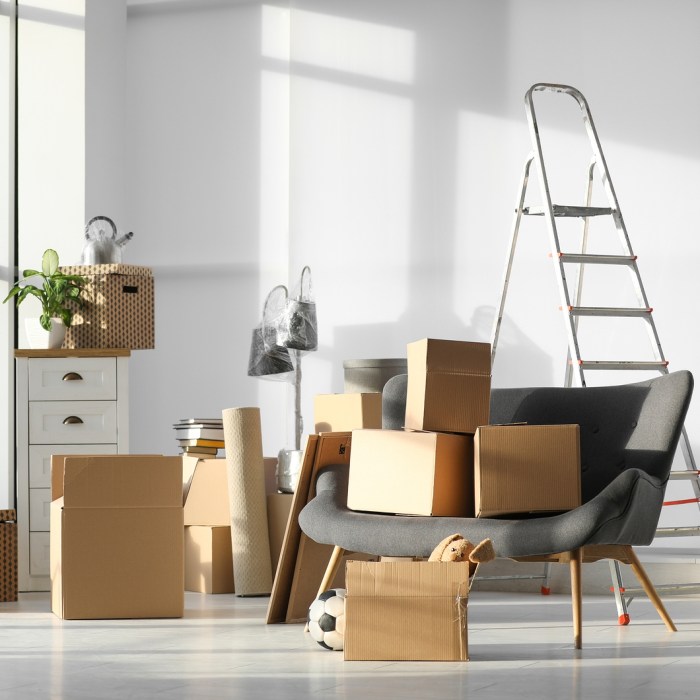Step aboard the fascinating world of ship furniture, where functionality, aesthetics, and maritime heritage converge. From the grand cabins of historic vessels to the sleek interiors of modern cruise ships, furniture plays a pivotal role in shaping the ambiance and experience at sea.
Ship furniture is not merely a collection of pieces; it’s a testament to the ingenuity and artistry of designers and craftspeople who have mastered the unique challenges of creating furniture that withstands the rigors of the open ocean while providing comfort and style.
Ship Furniture Materials and Styles
Ship furniture faces unique challenges due to the dynamic environment of a vessel. Materials and styles must consider factors like moisture, movement, and space constraints. Ship furniture makers employ a range of materials, including wood, metal, and fabric, to create pieces that are both functional and aesthetically pleasing.
Materials
Wood is a traditional choice for ship furniture due to its durability, natural beauty, and ability to withstand moisture. Common types used include teak, mahogany, and oak. Metal is also widely used, particularly for frames and hardware, as it provides strength and resistance to corrosion.
Fabric is used for upholstery, curtains, and other soft furnishings, adding comfort and a touch of elegance.
Styles
Ship furniture styles vary from traditional to modern and nautical. Traditional styles evoke the golden age of sailing, featuring intricate carvings, rich fabrics, and brass accents. Modern styles prioritize functionality and space efficiency, with clean lines and contemporary materials. Nautical styles incorporate elements of the sea, such as rope, anchors, and portholes, creating a cozy and inviting atmosphere.
Ship furniture is essential for the comfort and well-being of those onboard. For premium quality ship furniture, look no further than mas furniture , a leading provider in the industry. Their commitment to craftsmanship and durability ensures that your ship furniture will withstand the rigors of the open sea while maintaining its aesthetic appeal.
Design Considerations, Ship furniture
Designing and building furniture for ships requires careful consideration of the unique challenges posed by the marine environment. Furniture must be able to withstand moisture, movement, and space constraints. It should also be lightweight and easy to move, as space on a ship is often limited.
Ship furniture requires careful handling and expertise to ensure safe delivery. Professional furniture shippers provide specialized services to cater to the unique needs of shipping furniture. These experts understand the importance of proper packaging, handling, and transportation to preserve the quality and integrity of your valuable furniture during transit.
Functionality and Ergonomics

Functionality and ergonomics play a crucial role in ship furniture design, ensuring optimal space utilization, comfort, and efficiency for passengers and crew alike. Ship furniture is meticulously crafted to maximize space, often featuring multi-purpose designs that serve multiple functions. For instance, tables in cabins can convert into beds, while sofas in public areas can double as seating and storage.
Space Optimization
Due to the limited space on ships, furniture is designed to be compact and space-saving. Foldable and retractable furniture is common, allowing for easy storage when not in use. Stackable chairs and tables enable quick reconfiguration of spaces to accommodate different activities.
Ergonomics and Comfort
Ergonomics is paramount in ship furniture design, ensuring comfort and well-being for occupants. Chairs are designed with lumbar support and adjustable heights to promote proper posture and reduce fatigue during prolonged use. Beds are equipped with comfortable mattresses and adjustable headrests for optimal sleep quality.
Special Adaptations for Different Areas
Ship furniture is adapted to meet the specific requirements of different areas on the ship. In cabins, furniture is designed to be compact and provide maximum storage space. Dining rooms feature tables and chairs optimized for comfortable dining experiences. Public spaces, such as lounges and bars, incorporate furniture that encourages socialization and relaxation.
Safety and Regulations: Ship Furniture
Ship furniture must adhere to stringent safety regulations and standards to ensure the safety of passengers and crew. These regulations cover various aspects, including fire resistance, stability, and durability.
Fire resistance is paramount in ship furniture design to prevent the spread of fire in case of an emergency. Materials used in furniture must meet specific fire-retardant standards, ensuring they do not contribute to the spread of flames.
Stability
Furniture on ships must be designed with stability in mind to prevent overturning or movement during rough seas. This is achieved through proper weight distribution, secure anchoring, and anti-slip surfaces.
Durability
Ship furniture must withstand the harsh marine environment, including exposure to moisture, salt, and extreme temperatures. Durable materials and construction techniques are employed to ensure furniture can endure the rigors of seafaring.
Testing and Certification
Ship furniture undergoes rigorous testing and certification processes to ensure compliance with safety regulations. These tests include fire resistance tests, stability assessments, and durability evaluations.
Certified furniture meets the required standards and provides peace of mind to passengers and crew, knowing that their furniture is safe and reliable.
Aesthetics and Comfort

In the design of ship furniture, aesthetics and comfort play a crucial role in creating a welcoming and comfortable environment for passengers and crew alike. Ship furniture is meticulously designed to not only meet functional requirements but also to enhance the overall ambiance and well-being of those aboard.
Color and Lighting
Color and lighting are essential elements in ship furniture design. Colors can evoke emotions and create specific atmospheres. Warm colors, such as red, orange, and yellow, are often used in public areas to create a lively and inviting space. Cool colors, like blue, green, and purple, are preferred in private areas to promote relaxation and tranquility.
Lighting, both natural and artificial, is carefully planned to optimize visibility and create a comfortable ambiance. Natural light is maximized through large windows and skylights, while artificial lighting is used to create different moods and atmospheres.
Textures and Materials
The choice of textures and materials in ship furniture design is equally important. Soft, plush fabrics are often used in seating areas to provide comfort and warmth. Leather is a popular choice for upholstery due to its durability and luxurious feel.
Wood is commonly used for furniture frames and cabinetry, adding a touch of natural elegance. The combination of different textures and materials creates visual interest and adds depth to the interior space.
Ergonomics
Ergonomics, the science of designing products and environments to fit the human body, is another key consideration in ship furniture design. Furniture is designed to provide proper support and comfort, reducing fatigue and discomfort during prolonged use. Chairs and sofas are carefully contoured to provide lumbar support and promote good posture.
If you’re looking for a classic touch to your ship furniture, Haverty furniture offers a wide range of options. Their traditional designs will complement the timeless elegance of your vessel, adding a touch of sophistication to your seafaring adventures. Haverty’s attention to detail and commitment to quality ensure that your ship furniture will stand the test of time, providing comfort and style for years to come.
Tables and desks are designed at appropriate heights to minimize strain and ensure optimal comfort.
Historical and Cultural Influences

The design of ship furniture has evolved over centuries, reflecting technological advancements, cultural preferences, and the changing needs of seafarers. The earliest ship furniture was simple and functional, consisting of chests, bunks, and tables. As ships became larger and more complex, so did the furniture that adorned them.
Cultural influences have also played a significant role in shaping the design of ship furniture. For example, Chinese influences can be seen in the intricate carvings and lacquered finishes of some ship furniture. European influences are evident in the use of fine woods and upholstery.
American ship furniture often reflects the country’s Puritan heritage, with its emphasis on simplicity and practicality.
Iconic Ship Furniture Pieces
Over the centuries, several iconic ship furniture pieces have become symbols of maritime history. These include:
- The captain’s chair: A symbol of authority and leadership, the captain’s chair is typically a large, comfortable chair placed at the head of the table in the ship’s dining room.
- The ship’s wheel: A symbol of navigation and control, the ship’s wheel is a large wooden wheel used to steer the ship.
- The ship’s bell: A symbol of timekeeping and communication, the ship’s bell is used to mark the hours and to signal the crew.
Current Trends and Innovations
The maritime industry is constantly evolving, and ship furniture is no exception. In recent years, we have seen a number of new trends and innovations in ship furniture design.
One of the most significant trends is the use of new materials. Traditional materials such as wood and metal are still popular, but they are increasingly being supplemented by new materials such as composites, plastics, and fabrics.
Use of New Materials
- Composites are a type of material that is made from a combination of two or more different materials. They are often stronger and lighter than traditional materials, and they can be molded into complex shapes.
- Plastics are another popular material for ship furniture. They are lightweight, durable, and easy to clean. They can also be molded into a variety of shapes and colors.
- Fabrics are becoming increasingly popular for use in ship furniture. They are comfortable, durable, and easy to clean. They can also be used to create a variety of different looks.
Integration of Technology
Another trend in ship furniture design is the integration of technology. This includes the use of sensors, actuators, and other devices to create furniture that is more comfortable, functional, and safe.
- Sensors can be used to detect the presence of a person, the temperature of the room, or the level of light. This information can be used to automatically adjust the furniture to the user’s needs.
- Actuators can be used to move the furniture, change its shape, or adjust its position. This can be used to create furniture that is more comfortable and ergonomic.
Sustainability
Sustainability is also becoming an increasingly important consideration in ship furniture design. Designers are looking for ways to create furniture that is made from sustainable materials and that can be recycled or reused at the end of its life.
- Sustainable materials include wood from sustainably managed forests, recycled plastic, and natural fibers.
- Furniture that is designed to be recycled or reused can be disassembled easily and its components can be reused in other products.
Adaptability
Finally, ship furniture is becoming increasingly adaptable. This means that it can be easily reconfigured to meet the changing needs of the maritime industry.
- Modular furniture can be easily assembled and disassembled, making it easy to reconfigure the layout of a space.
- Multi-purpose furniture can be used for a variety of purposes, making it more efficient and space-saving.
Final Conclusion
As the maritime industry continues to evolve, so too does the design of ship furniture. New materials, technologies, and design concepts are constantly being explored to meet the changing needs of passengers and crew. Whether it’s the classic elegance of traditional ship furniture or the cutting-edge innovations of modern design, ship furniture remains an integral part of the maritime experience.
Questions and Answers
What are the most common materials used in ship furniture?
Wood, metal, and fabric are the most commonly used materials in ship furniture.
How is ship furniture designed to maximize space and efficiency?
Ship furniture is often designed with built-in storage, foldable or multi-purpose pieces, and compact dimensions to maximize space and efficiency.
What safety regulations apply to ship furniture?
Ship furniture must meet strict safety regulations for fire resistance, stability, and durability to ensure the safety of passengers and crew.